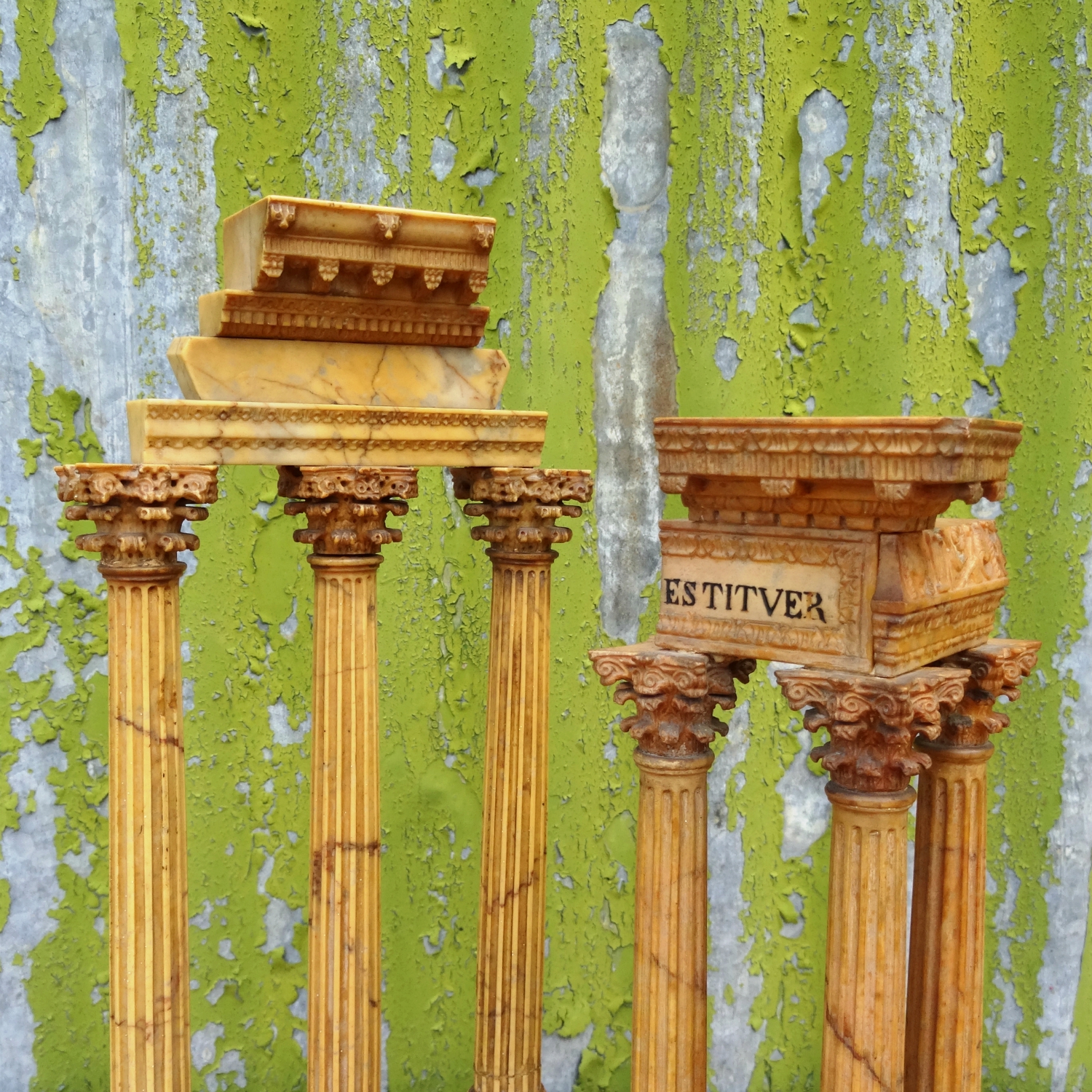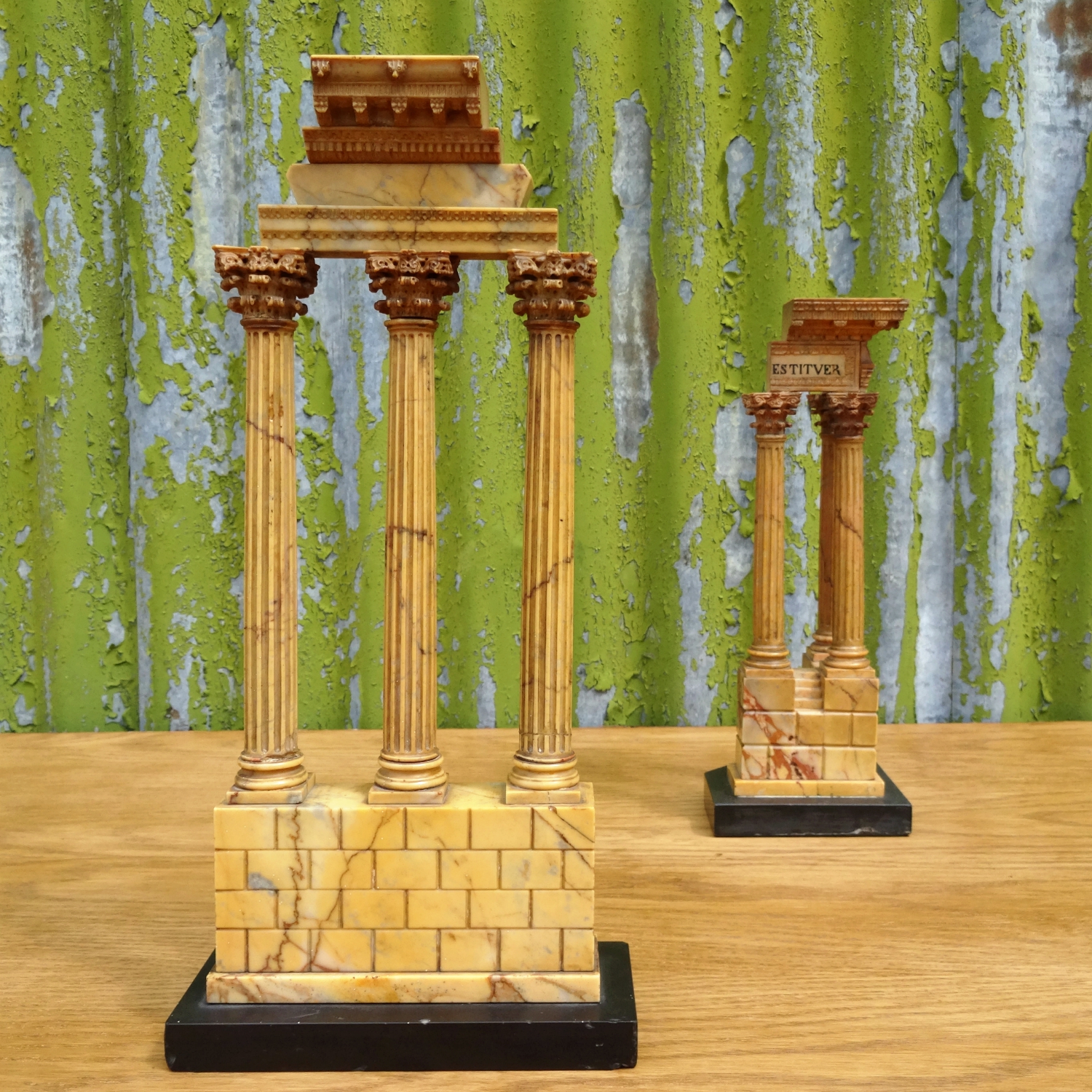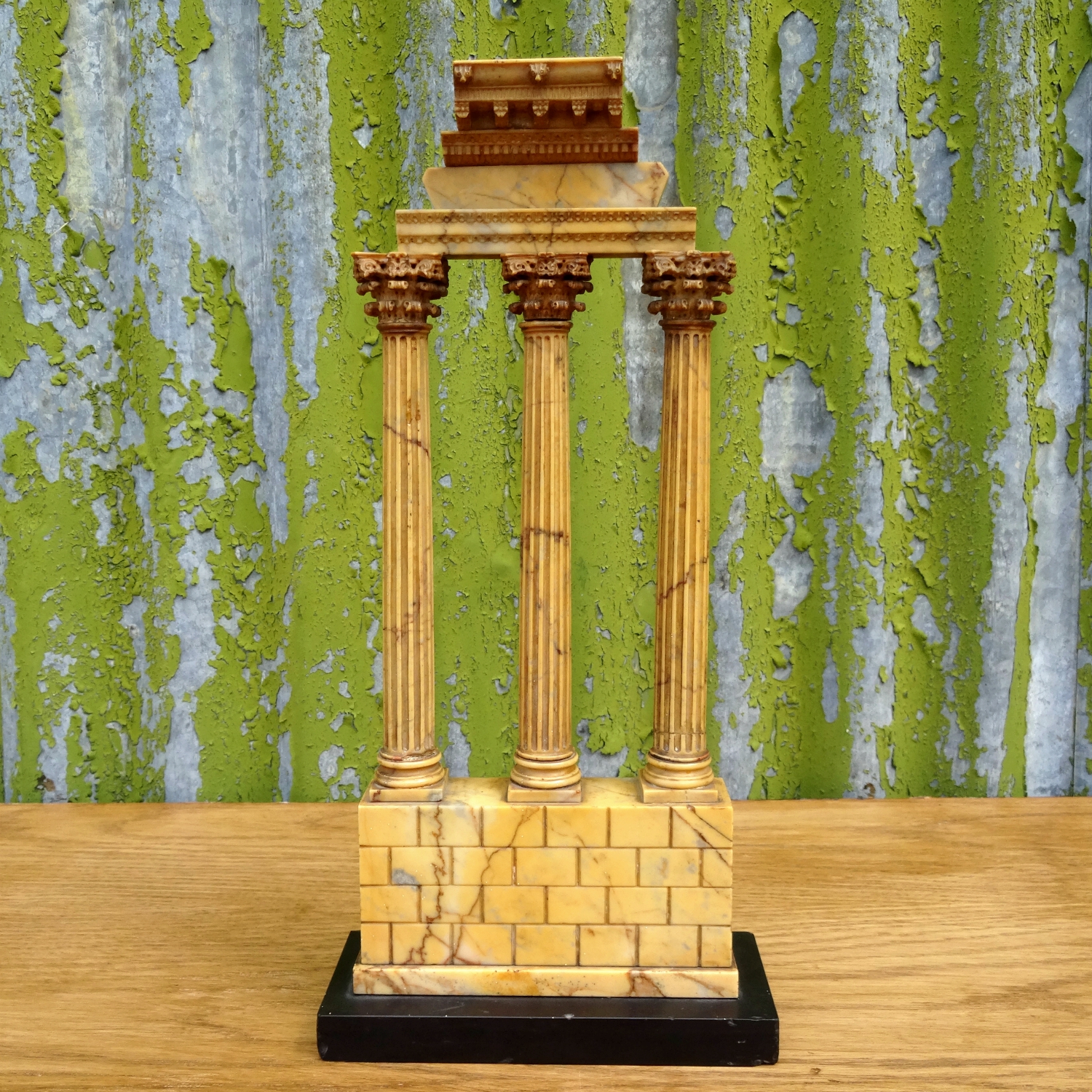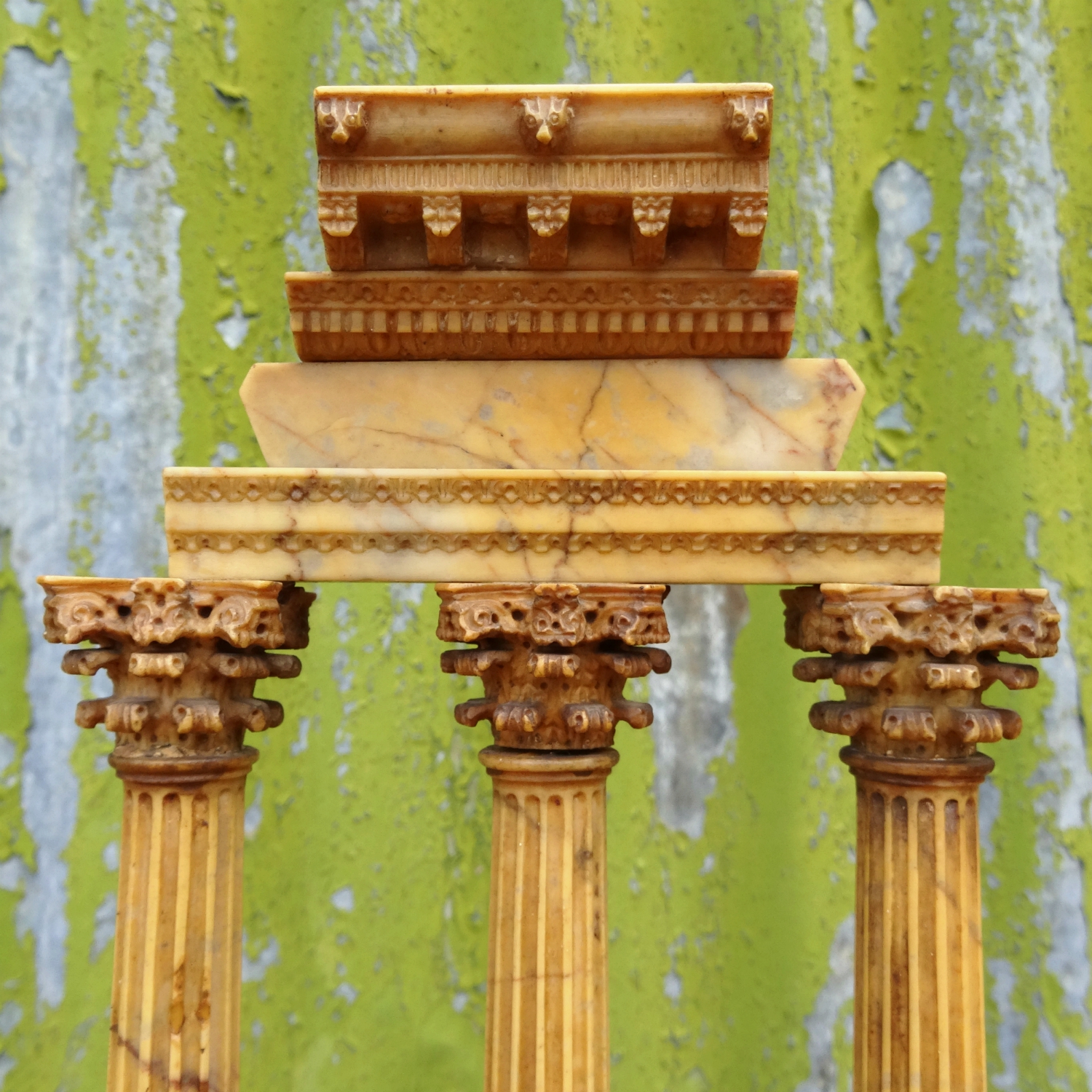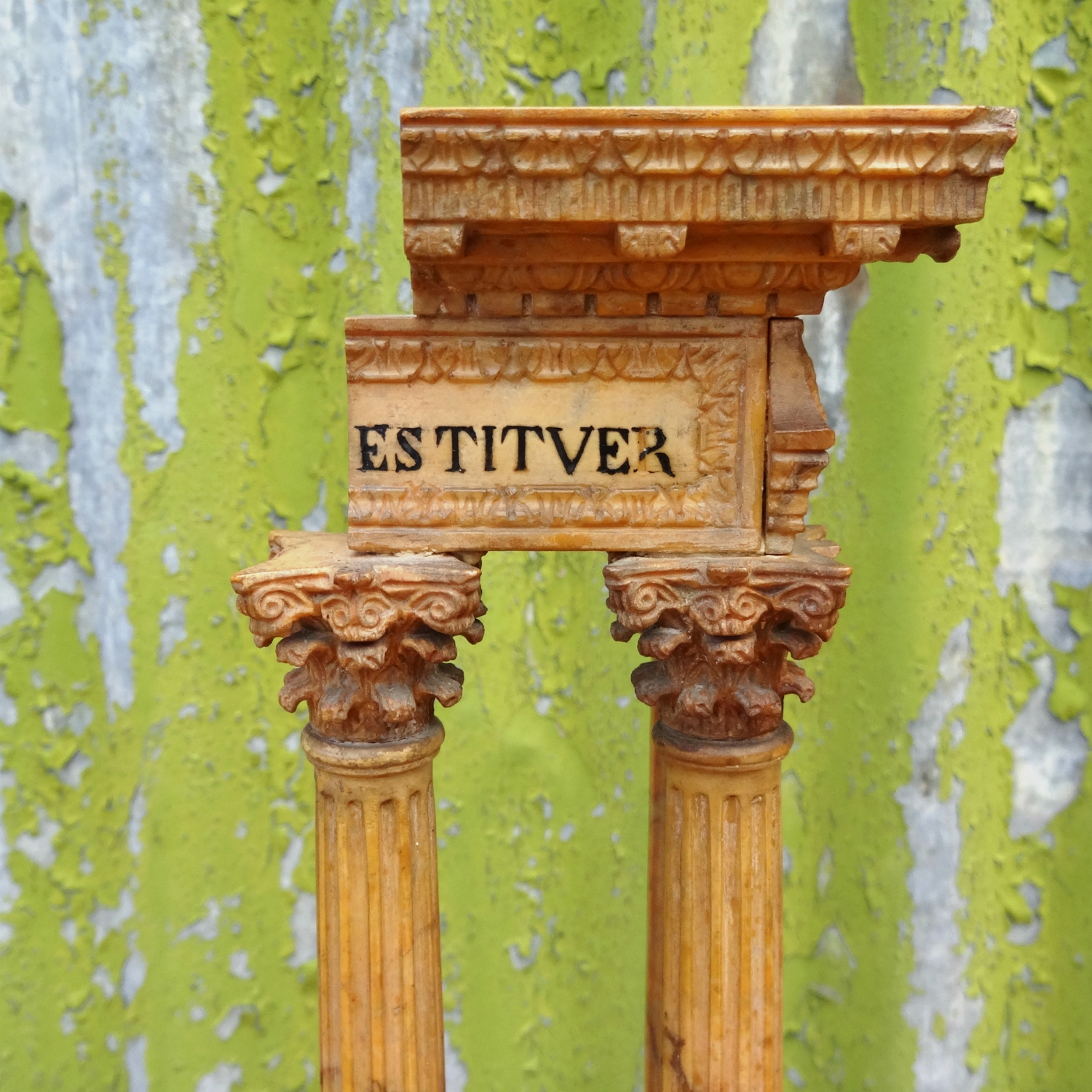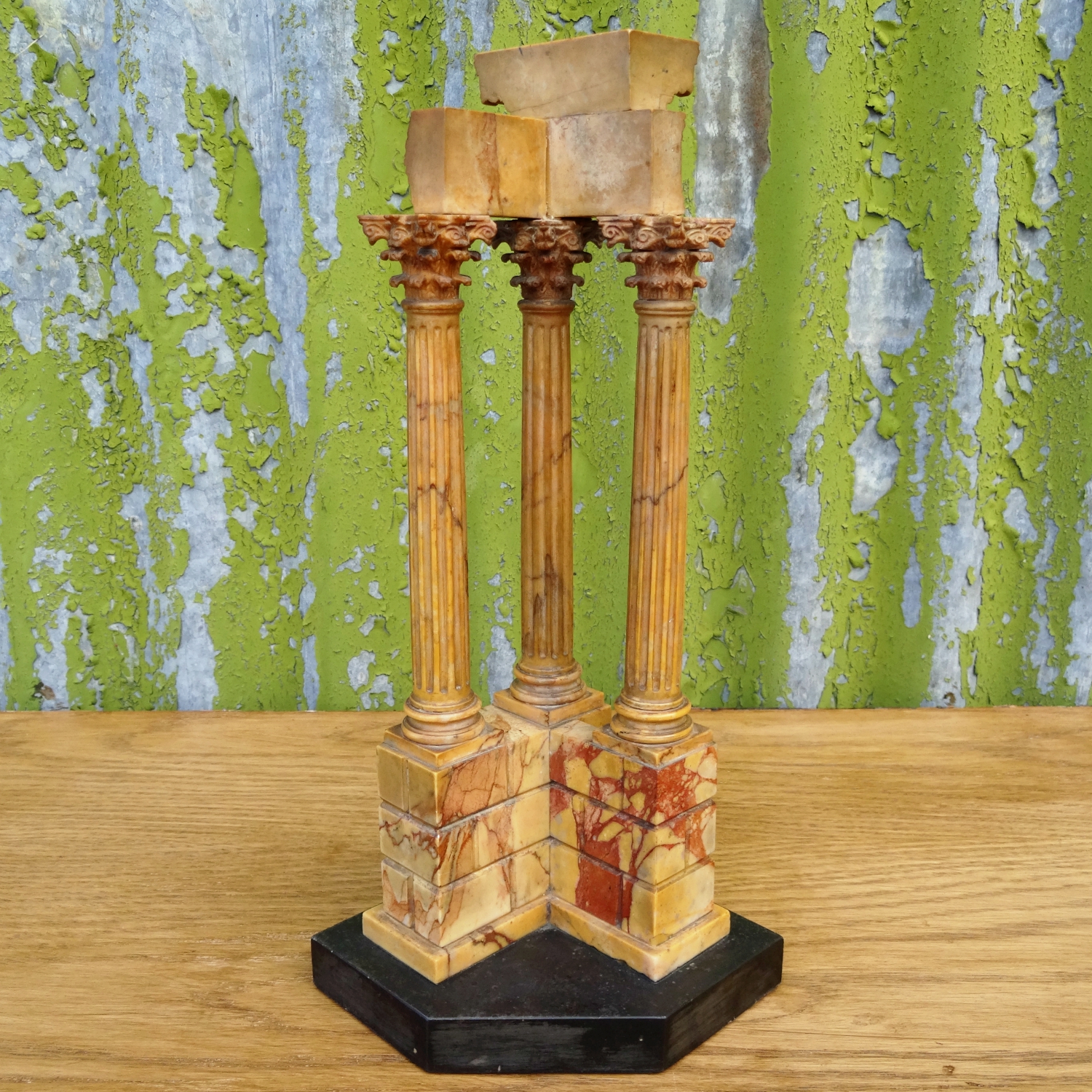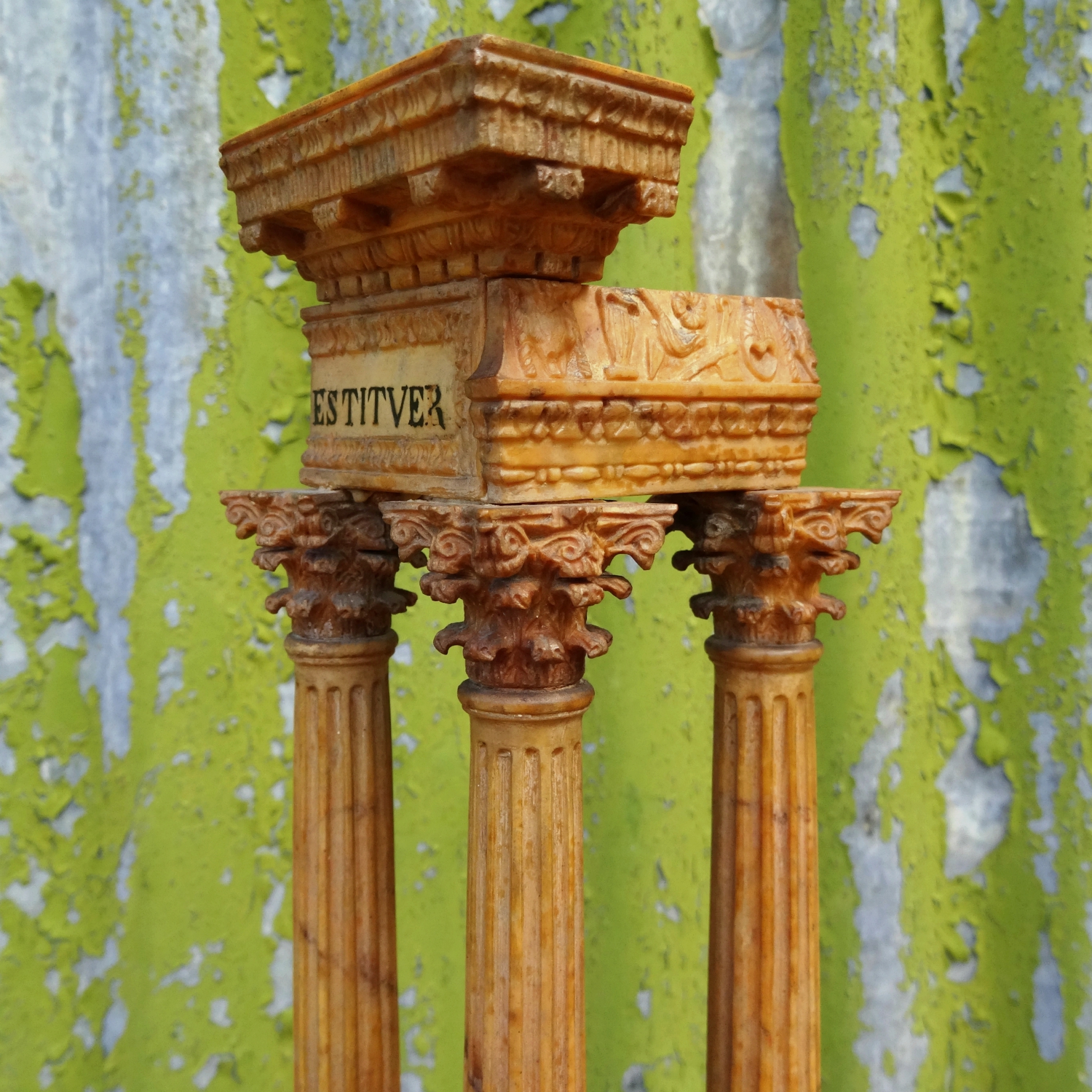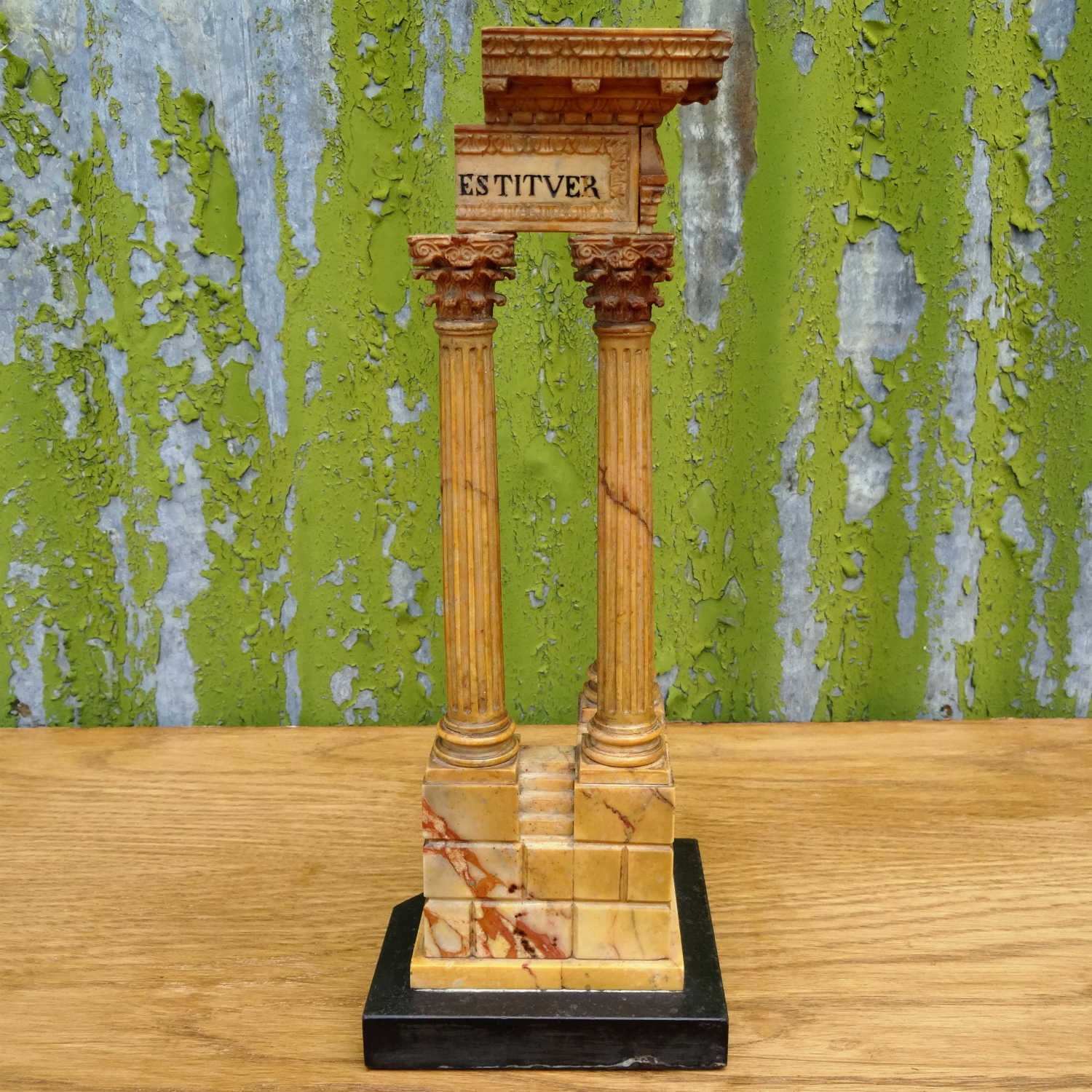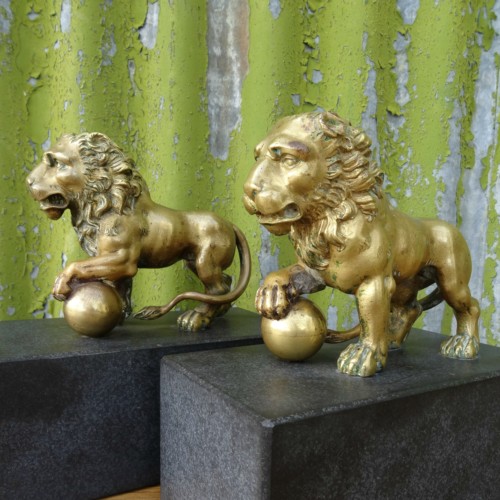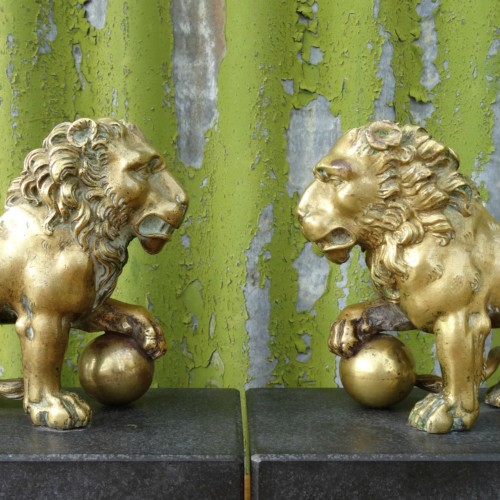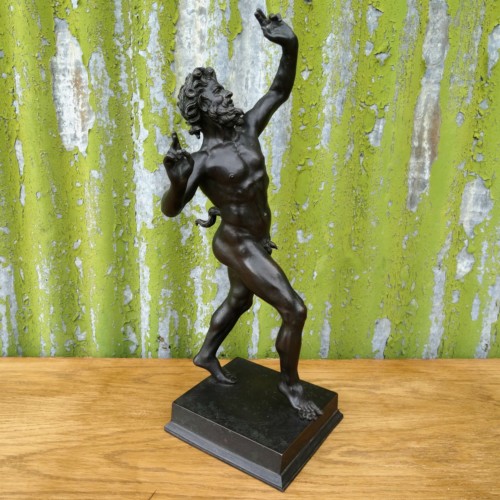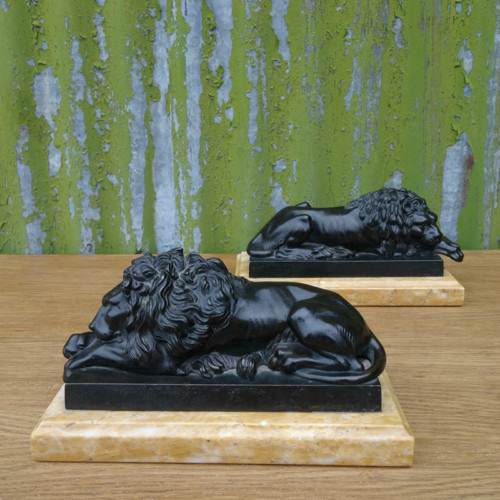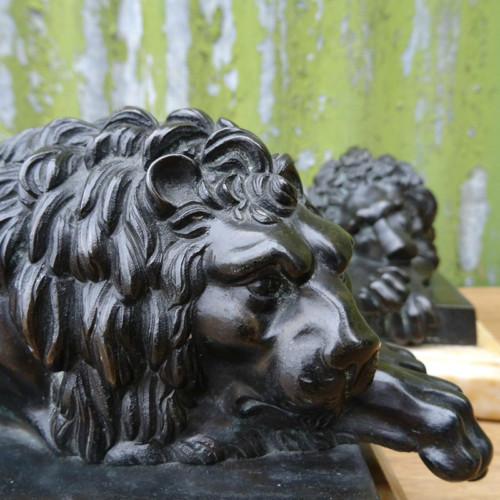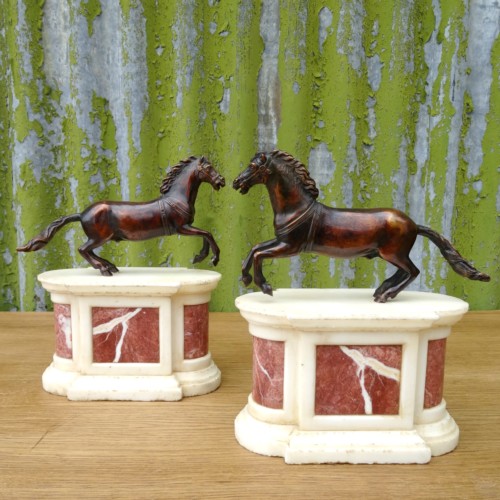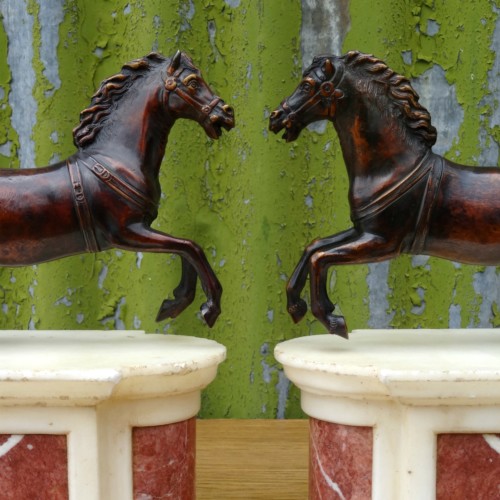Dimensions: Castor and Pollux 34cm high, 16.5cm wide, 7cm deep; Vespasian and Titus 29cm high, 11cm wide, 11cm deep
Footnote
The temple ruins of Castor and Pollux stand in the Forum in Rome, near the Temple of Vesta, and honour the Dioscuri (Gemini) twins. Pollux was immortal and Castor was mortal. When Castor was killed, Pollux asked Zeus to allow him to share his immortality with his brother so they could stay together, and they were turned into the Gemini constellation. The twins were horsemen and hunters. The Romans adopted the twins from the Greeks as early as the 6th century BC. The construction of the Temple of Castor and Pollux was to fulfill a vow to build them a temple for their assistance at the Battle of Lake Regillus by the infant Roman Republic in 495 BC. According to the legend, the Dioscuri twins appeared as two horsemen on the battlefield and aided the Republic. After the battle, they appeared in the Forum to water their horses at the spring of Juturna, where the temple was founded. The temple served as a meeting place for the Senate in the Republican period, and was the depository for the Treasury during the Imperial period. The temple was still intact in the 4th century, but by the 15th century only the three massive columns, over forty-eight feet high, were still standing, and still remain now.
The temple ruins of Vespasian and Titus stand in the Forum in Rome, between the Temple of Concordia and the Temple of Saturn, and honour the deified Vespasian and his son, the deified Titus. It was begun by Titus in AD 79 after Vespasian’s death and Titus’s succession. Titus’ brother, Domitian, completed and dedicated the temple to Titus and Vespasian in approximately AD 87.
The Grand Tour of the late 17th, 18th and 19th centuries saw many upper class, wealthy and aristocratic gentlemen travel to Italy and Europe, particularly Rome, Venice and Florence, for pleasure, education and inspiration. This afforded them the opportunity to view important classical and Renaissance works of art and architecture.
The term ‘Grand Tour’ was coined by the Catholic priest and travel writer Richard Lassels (circa 1603-68), who used it in his influential guidebook The Voyage of Italy, published in 1670, to describe young lords travelling abroad to learn about art, architecture and antiquity.
Robert Adam wrote of Rome in 1755, ‘Rome is the most glorious place in the universal world. A grandeur and tranquillity reigns in it, everywhere noble and striking remains of antiquity appear in it, which are so many that one who has spent a dozen years in seeing is still surprised with something new…’
Many Grand tourists collected souvenirs in the form of bronze and marble models of sculpture and architecture, and formed collections of Grand Tour objects for their English country houses, most notably Chatsworth House.

